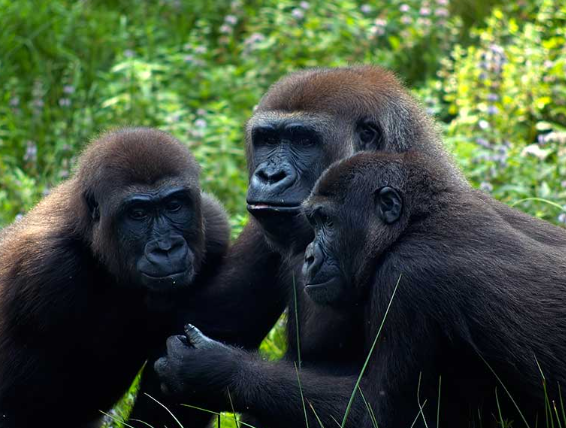Gorilla Family Groups and Social Bonds
Gorillas are magnificent creatures that display intricate social structures and strong familial ties. Understanding their family dynamics not only deepens our appreciation for these incredible animals but also sheds light on their behaviors and conservation needs.
Strong Family Units
At the heart of gorilla societies are their family groups, typically led by a dominant male known as a silverback. These groups can consist of several females and their offspring, creating a tight-knit community. This social structure is crucial for the survival and protection of young gorillas. The silverback plays a vital role in safeguarding the group from threats, while the females share child-rearing responsibilities, nurturing and teaching their young how to thrive in their environment. By working together, these families ensure that each member is supported and that the group remains cohesive.
Communication and Bonding
Gorillas are known for their complex communication, which includes vocalizations, body language, and facial expressions. These methods strengthen social bonds within the group. For instance, grooming is a common behavior that not only keeps the fur clean but also reinforces trust and affection among members. Additionally, when a young gorilla feels threatened or unsettled, adult members quickly come to its aid, demonstrating a strong sense of familial loyalty. These interactions showcase the emotional depth found within gorilla families, highlighting their ability to form strong, nurturing relationships.
The Importance of Social Bonds
Social bonds within gorilla groups are critical for their overall well-being and can influence their health and longevity. Research indicates that gorillas with strong familial connections tend to show lower stress levels and improved resilience against illness. Conservation efforts are increasingly focusing on protecting these family structures, emphasizing the need for habitat preservation and reduced human interference. By ensuring that gorillas can live in stable family groups, we support their survival and promote biodiversity in their ecosystems.
In conclusion, gorilla family groups exemplify the beauty of social bonds in the animal kingdom. Learning more about these incredible creatures helps foster a greater appreciation for their roles in our world and emphasizes the importance of conservation efforts. If you’re interested in supporting gorilla conservation, consider visiting a local zoo or wildlife sanctuary, or contributing to organizations dedicated to their protection. Every little effort counts!

